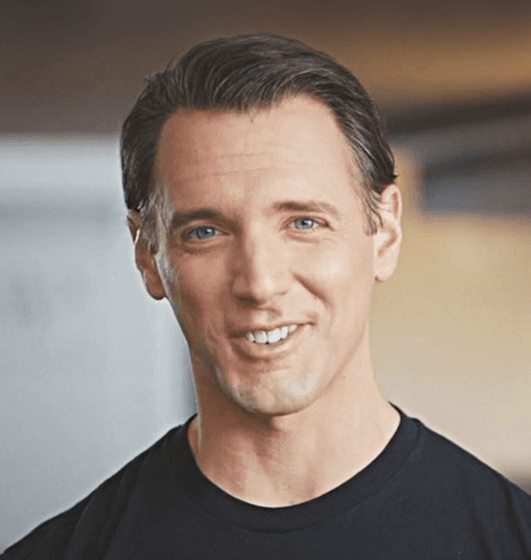My colleagues and I have worked with a lot of elite athletes at Precision Nutrition. And we’ve worked with countless regular folks—people exactly like your clients.
The two groups have a lot more in common than you’d expect. In fact, a surprising number of coaching principles apply across the board, no matter who the clients are and what they do.
Here are nine lessons that apply to just about any client who’ll come to you for nutrition guidance.
READ ALSO: How to Become an Online Nutrition Coach
Lesson #1: The best meal plan is worthless if your client doesn’t like the food
Imagine if, instead of crafting an individualized training program for each client, you simply handed them a written workout and told them to follow it.
If they wanted a generic workout, they could easily find one online. Many of them have already tried, which is why they came to you. They need a program that takes into account their goals, training history, abilities, limitations, and all the other variables you consider.
It works the same way with a nutrition plan. No matter how precisely you calculate calories and macros, if it doesn’t include some of your client’s favorite foods, it’s dead on arrival.
Brian St. Pierre, Precision Nutrition’s director of sport nutrition, learned this from working with pro athletes. Some of those at the top of their game are extremely picky eaters. They have favorites they can’t live without, and aversions to foods you think every good diet should include.
A few tactics to make sure your clients follow the plans you come up with*:
1. Start with a template
Just as you build your training programs from a handful of basic templates, so can you write many different meal plans from a relatively simple structure.
READ ALSO: A Plug-and-Play Template for Program Design
2. Include the client’s favorite foods
The client can’t start the day without a supersweet Frappuccino? Can’t turn down her mother-in-law’s casserole on Sunday evenings? Assume those things are part of the diet, and adjust the rest of the meal plan accordingly.
To make room for them, ask your client what she wouldn’t miss if she substituted something else. What does she eat out of habit rather than hunger? Replace those with healthier, lower-calorie options, and she can mitigate the damage of the calorie bombs she can’t live without.
3. Make sure it’s convenient
You’d think the highest-earning pro athletes live in a hermetically sealed world where they only see the food their private chefs prepare for them. But in reality, those athletes travel constantly, and when they do, their food options are often limited to the burgers, wings, and pizza on late-night room service menus.
Your clients often face similar constraints. Maybe they work in a place with limited nearby food choices. Maybe they’re stuck in morning meetings where “breakfast” is platters of pastries. Maybe they have young children, and their weekends are so jam-packed with activities that fast food is their default option.
Help them navigate these obstacles. Suggest microwavable meals for work, smoothies they can make at home and drink at the meeting, and lists of the best options at the major fast food chains.
* This assumes you’re capable, confident, and qualified to provide meal plans. (Most personal trainers aren’t.) For more on providing nutrition advice, check out this article.
Lesson #2: Sometimes you have to shape the environment before you can get results
Where is your client’s nutrition plan most likely to fall apart? At home? In the office? On the road? At restaurants? If the biggest problems tend to occur in the same place, you may need to pay a visit.
When you visit the client’s home, for example, check out the kitchen. What’s on the counters? Are they so cluttered your client has no room to prepare meals? What about the cabinets? Does your client have staple ingredients for healthy meals, or are the shelves stocked with all the things they’re trying to avoid?
You can give your client grocery lists, or even go shopping with them. You can also share recipes and cooking demos.
Same with the office, or restaurants, or the client’s commute. Seeing those environments should help you come up with ways for your client to navigate them.
Lesson #3: Get buy-in from your client’s influencers
I used to work with junior hockey players in Canada. They were elite athletes, but they were also young, and either living with their parents or with host families if they didn’t play in their hometown.
I did my best to teach them the basics of nutrition and meal prep, but I quickly realized it didn’t matter unless I focused on the people who actually prepared their meals. The more buy-in I got from them, the better the athletes’ adherence would be.
The same applies to your clients. Their biggest challenges may come from the other people in their lives: spouses, kids, roommates, coworkers, friends, extended family.
If a spouse cooks most of the meals, see if you can sit down and talk through some meal options. Perhaps you can even cook a meal for them, or share one of theirs.
READ ALSO: Why You Should Have Dinner With Your Clients
Lesson #4: Don’t assume anything about the client’s skill in the kitchen
Appearances can be deceiving. Just because someone is a star in their sport, or is leaner and fitter than your average client, doesn’t mean they have advanced nutrition knowledge, or know how to prepare anything more complex than a bowl of oatmeal.
The opposite may also be true. Someone who’s seriously overweight or deconditioned may have Top Chef-level culinary skill.
Instead of making assumptions or guesses about where your client is at, ask questions. Listen. Observe. Seek to understand rather than to prove yourself right.
Lesson #5: Forget perfection
If you’re training competitive physique athletes, the diet has to be near-perfect for the client to succeed.
But most of your clients will see real, significant, measurable progress toward their goals if they can get 80 percent of their meals on point, especially if they aren’t close to that now.
Sometimes they’re so far away that the best you can do is make things less terrible. A little less fast food. Fewer non-diet sodas or teas or coffees or juices. Less alcohol. Smaller portions.
As long as it’s a little better than before, they’re moving in the right direction. As we learned from this huge data set, the little changes can add up to powerful results.
Lesson #6: Beware of fanatical adherence
Then there’s the opposite type of client, the one who defines success as 100 percent adherence.
They’re often trying to emulate athletes or celebrities who’re celebrated for a dramatic transformation or uncompromising discipline. But for most of their role models, the extreme diets have a natural cutoff point—the end of the season, or the conclusion of a movie role. They don’t try to deprive themselves 52 weeks a year.
If your client has the same idea—lose a bunch of weight by a specific deadline, like a wedding or reunion—it’s rarely dangerous. Perfection only has a dark side if the client sees it as a permanent condition. Because it’s an impossible standard, your client is set up for failure.
Countering that mindset can be tricky. You don’t want to discourage the client, or imply they can’t pull it off. Talk about the importance of seasonality, and putting a time limit on a goal like getting as lean as possible. Maybe focus on strength for a few months, or endurance, with the understanding they’ll need to be fully nourished to make it work.
And if the client’s only goal is to lose as much fat as possible? Keep the long game in mind. Discuss how to get there as safely as possible, and why it’s important to back off and recover from time to time.
READ ALSO: What Do You Do with a Client Who Wants too Much, too Soon?
Lesson #7: What works for one client won’t work for all your clients
And what works for you might not work for any of them. This is especially true if you’re a true believer in whatever diet happens to be trending at the moment.
I’ve seen this at all levels, from a strength coach who put NFL linemen on strict ketogenic diets to trainers in commercial gyms who pushed their clients to follow their favorite plan. Once a fitness pro decides they’ve found the one true path, they turn into evangelists, trying to convince everyone to use the diet for every goal, and to keep using it indefinitely.
Taken to the most absurd extremes, a client who’s trying to gain muscle might be fasting for much of the day, while someone trying to lose weight is putting butter and coconut oil in his coffee.
Individual needs should come before trends every time. And individual habits, preferences, and circumstances matter more than “this works for some guy on Instagram” or “this should work in theory.”
READ ALSO: 11 Diet and Fitness Trends That Aren’t Actually New
Lesson #8: “Healthy” foods aren’t healthy for everyone
You already know that lots of people have food allergies or sensitivities, and not just to peanuts or gluten or dairy. Some are allergic to fruit, red meat, or celery.
Allergies aside, even the healthiest foods aren’t optimal for every client, especially when they’re calorie-dense and easily overconsumed. How they’re prepared also matters. “Superfoods” aren’t quite so super if the dark leafy greens are drenched in high-calorie dressing or the salmon is sautéed and topped with a creamy sauce.
Lesson #9: Take advantage of your client’s strengths
Every single client, whether they’re a gold medalist or someone who’s never been past the front desk of a gym, has at least one superpower.
One of your jobs as a coach is to help them figure out what they’re already good at and put those abilities to use.
Maybe that middle-aged guy is a spreadsheet ninja, and the opportunity to track every bite of food leads to better adherence. Or maybe that mild-mannered accountant loves to get outside and wander around, and you can steer her toward local farmers markets.
Maybe they have the ability to learn, but until they worked with you they were never interested in nutrition. Maybe they struggle with impulse control, but make up for it with a surprising ability to get back on the wagon every time they fall off.
Help your clients recognize their own superpowers, and then put them to use. Celebrate every step forward, no matter how modest.
No, they’ll never be the star of the team. But you can still be their cheerleader.
John Berardi’s latest book is Change Maker: Turn Your Passion for Health and Fitness into a Powerful Purpose and a Wildly Successful Career. A version of this article originally appeared at Precision Nutrition.










